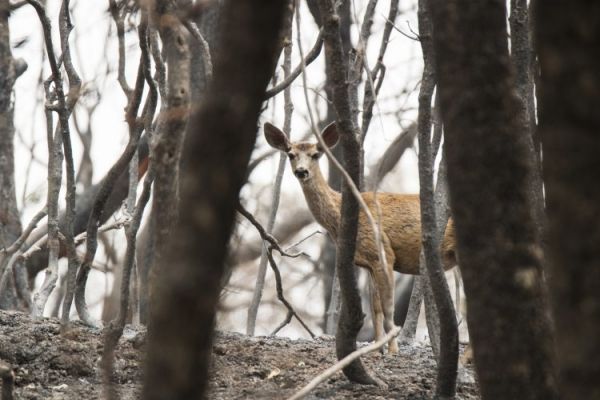When a massive wildfire tears through a landscape, what happens to the animals?
While many animals have adapted to live with wildfires of the past — which were smaller, more frequent and kept ecosystems in balance across the West — it’s unclear to scientists how animals are coping with today’s unprecedented megafires. More than a century of fire suppression coupled with climate change has produced wildfires that are now bigger and more severe than before.
In a rare stroke of luck, researchers from the University of Washington, the University of California, Berkeley, and the University of California, Santa Barbara, were able to track a group of black-tailed deer during and after California’s third-largest wildfire, the 2018 Mendocino Complex Fire. The megafire, which torched more than 450,000 acres in northern California, burned across half of an established study site, making it possible to record the movements and feeding patterns of deer before, during and after the fire. The results were published Oct. 28 in the journal Ecology and Evolution.
Read more at: University of Washington
A black-tailed deer at the University of California’s Hopland Research and Extension Center, seen after the 2018 Mendocino Complex Fire. Deer from burned areas had to work harder and travel farther to find green vegetation, and researchers noticed a decline in body condition in some of the animals. (Photo Credit: Samantha Kreling)


